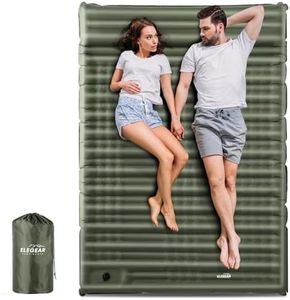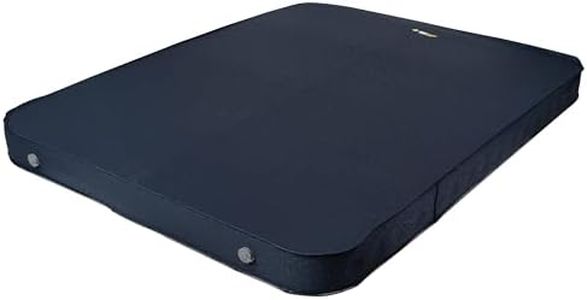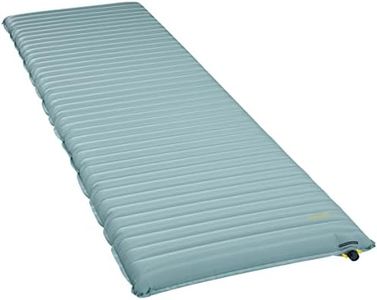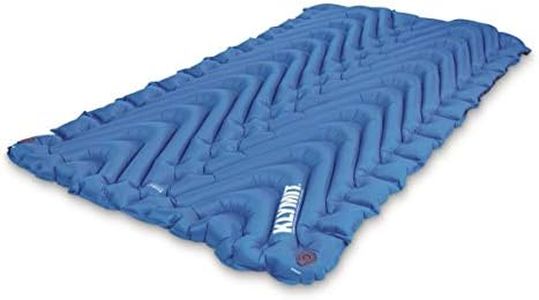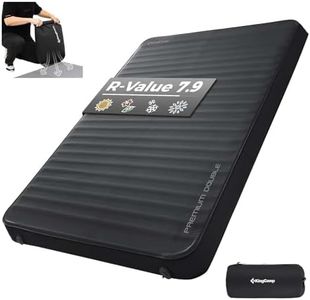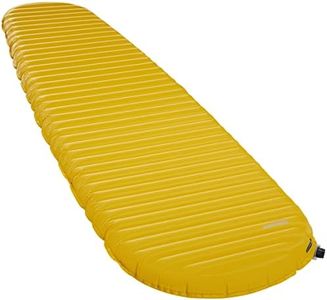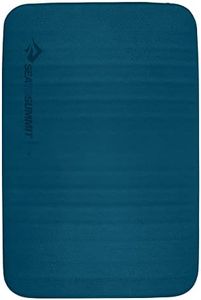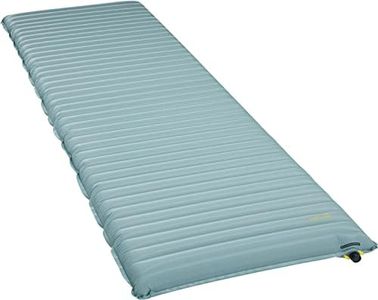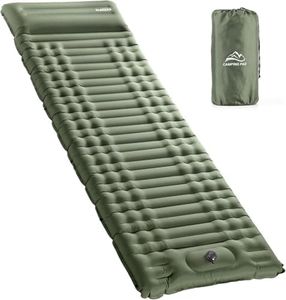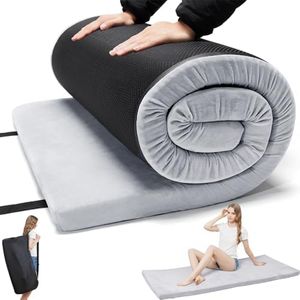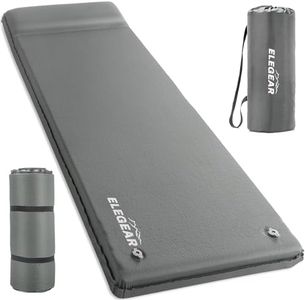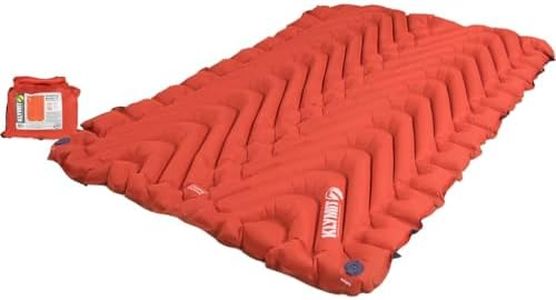We Use CookiesWe use cookies to enhance the security, performance,
functionality and for analytical and promotional activities. By continuing to browse this site you
are agreeing to our privacy policy
10 Best Car Camping Sleeping Pads
From leading brands and best sellers available on the web.Buying Guide for the Best Car Camping Sleeping Pads
Choosing the right car camping sleeping pad can make the difference between a restful night's sleep and a rough morning. When you're camping with your car nearby, you often don't need to worry much about weight or size, giving you more flexibility to prioritize comfort, insulation, and durability. It's important to think about your sleeping habits, the climate, and how much space you have in your car when picking the perfect sleeping pad.ThicknessThickness refers to how deep the pad is when fully inflated or expanded, and it's crucial for both comfort and insulation. Thicker pads (usually 3 inches or more) provide more cushion and support, which is great for side sleepers or anyone seeking a softer surface. Medium thickness (about 2-3 inches) can balance comfort and compactness, working for most users. Thinner pads (1-2 inches) are usually less comfy but take up less space. If you value plushness, go for thick; if you just need a barrier and pack space is limited, a thinner option can suffice.
R-Value (Insulation)The R-value measures a sleeping pad's ability to resist heat loss to the ground—higher numbers mean better insulation. For warm weather car camping, an R-value of 1-2 is usually enough. For three-season use, aim for 2-4, while winter camping calls for an R-value of 4 or above to stay warm through cold nights. Think about when and where you'll camp most often and choose an R-value that matches the coldest conditions you'll face.
Size and ShapeSleeping pads come in different lengths and widths as well as shapes such as rectangular, mummy, or double-wide. A longer, wider pad is better for taller or restless sleepers, while compact shapes work for smaller campers or those who roll less. Double-wide pads are perfect for couples or if you want lots of room. Check your car and tent space to see what size fits best; if you toss and turn, maximize both width and length for better comfort.
Material and DurabilityThe material affects both how tough and how comfy the pad feels. Thicker, tougher fabrics are more resistant to punctures and rough terrain, great if you'll be using the pad outdoors or want it to last. Softer, less durable materials can feel nicer on the skin but might require extra care. Consider how rough you'll be with your gear—go for tougher materials for heavy use and longevity, or prioritize comfort if you'll mostly be inside a tent or vehicle.
Inflation MethodPads may be self-inflating (expand on their own), require manual inflation, or need an electric or battery pump. Self-inflating pads are convenient and offer good support, but may take a few minutes to fully expand. Manually inflated pads often pack smaller and can be lighter, but require a bit of effort. Some larger pads require pumps. Think about how much you want to set up at camp and what you're comfortable carrying—if ease matters, choose self-inflating; if saving space is key, manual options may be best.
PackabilityPackability looks at how small the pad can be rolled up or folded for storage. Although car camping allows for bigger pads, packability still matters if your vehicle is packed with gear or if you want to save space. Thick and plush pads usually take up more room, while thinner or more compactable ones are easier to store but may sacrifice comfort. Think about your typical load—if trunk space is tight, look for a more packable pad; if space is not an issue, maximize comfort instead.

